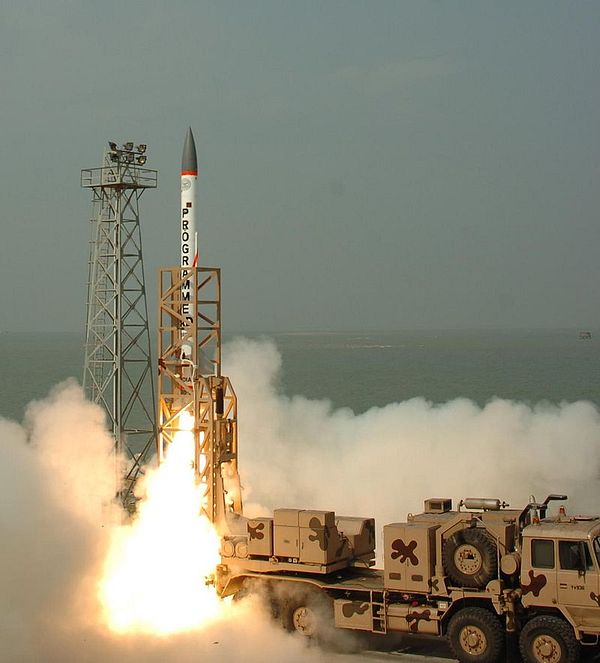Advanced Missile Technology: A U.S. Response To Chinese Naval Growth

Table of Contents
The Rise of Chinese Naval Power and its Implications
China's naval modernization is a multifaceted and ambitious undertaking, fundamentally altering the strategic landscape of the Indo-Pacific. This expansion isn't just about increasing the number of ships; it's about building a blue-water navy capable of projecting power far beyond its shores and challenging established maritime dominance. This includes significant advancements in several key areas:
- Increased number of destroyers and frigates: China's fleet now boasts a large and growing number of modern destroyers and frigates equipped with advanced weaponry and sensors, enhancing its offensive and defensive capabilities.
- Development of aircraft carriers and advanced fighter jets: The commissioning of its first domestically built aircraft carrier signifies a major leap forward in its naval projection capabilities, supported by increasingly sophisticated fighter jets.
- Expansion of submarine fleets and deployment of nuclear submarines: China's expanding submarine fleet, including nuclear-powered ballistic missile submarines (SSBNs), poses a significant threat to U.S. naval assets and regional stability.
- Growth of coastal defense systems and long-range missiles: Extensive coastal defense networks and the development of long-range anti-ship ballistic missiles (ASBMs) create significant anti-access/area-denial (A2/AD) challenges for the U.S. Navy.
- Aggressive actions in the South China Sea: China's assertive actions in the South China Sea, including island building and militarization, directly challenge existing international norms and regional security.
This Chinese naval expansion, coupled with its A2/AD capabilities, directly threatens U.S. naval dominance and regional stability in the Indo-Pacific. The potential for conflict and miscalculation is heightened by this rapidly evolving power dynamic.
Key Areas of U.S. Advanced Missile Technology Development
In response to these challenges, the United States is accelerating the development and deployment of a range of advanced missile technologies designed to counter China's growing naval power and maintain its strategic advantage. Key areas include:
- Hypersonic missiles: Hypersonic weapons, including hypersonic glide vehicles (HGVs), represent a significant leap forward in missile technology. Their extreme speed and maneuverability make them extremely difficult to intercept, offering a potent capability for precision strikes against high-value targets.
- Precision-guided munitions (PGMs): The U.S. military continues to refine its PGMs, emphasizing accuracy and minimizing collateral damage. These precision strike capabilities are vital for minimizing civilian casualties and maximizing military effectiveness.
- Long-range anti-ship missiles (LRASMs): Advanced LRASMs extend the range and effectiveness of U.S. naval forces, providing the capability to engage enemy ships from significantly greater distances.
- Defensive missile systems: Investing in robust missile defense systems, including anti-ballistic missiles (ABMs), is crucial for protecting U.S. assets from incoming missile attacks. This forms a critical layer in the overall defense strategy.
- Drone technology integration with missile systems: The integration of drone swarms and unmanned combat aerial vehicles (UCAVs) with missile systems offers a new dimension of flexibility and effectiveness in targeting and reconnaissance.
Strategic Implications and Deployment Strategies
The strategic implications of these advanced missile systems are far-reaching. Their deployment will significantly impact U.S. military operations in the Indo-Pacific region:
- Impact on power projection capabilities: Advanced missile technology enhances the U.S. ability to project power across vast distances, maintaining its presence and influence in the region.
- Deterrence against Chinese aggression: The development and deployment of these systems serve as a powerful deterrent against potential Chinese aggression, aiming to discourage escalatory actions.
- Enhanced alliance relationships: Collaboration with allies in developing and deploying these technologies strengthens strategic partnerships and enhances collective security.
- Challenges in deployment and maintenance: The complex nature of these systems presents challenges in deployment, maintenance, and logistical support.
- Potential for escalation and arms race: The development of advanced missile technologies carries the risk of escalating tensions and triggering a potentially destabilizing arms race.
Effective deployment strategies must consider these challenges to maximize the benefits and mitigate the risks associated with these powerful weapons. Strategic deterrence through a combination of capabilities, including advanced missile systems, is crucial for maintaining regional stability.
The Role of AI and Machine Learning in Advanced Missile Systems
The integration of artificial intelligence (AI) and machine learning is revolutionizing advanced missile systems. AI-powered missiles offer enhanced accuracy, improved targeting capabilities, and the potential for autonomous operation, significantly improving their effectiveness and lethality. This includes autonomous weapons systems that can identify and engage targets with minimal human intervention, although ethical considerations surrounding such systems remain a crucial area of discussion.
Conclusion
The development of advanced missile technology is a direct response to China's growing naval power. The United States is investing heavily in hypersonic missiles, precision-guided munitions, long-range anti-ship missiles, and robust missile defense systems to counter this threat and maintain its strategic interests. These advancements are crucial for maintaining regional stability, deterring potential aggression, and projecting U.S. power in the Indo-Pacific. Further research and investment in advanced missile technology, including advanced missile defense systems, are crucial for ensuring continued U.S. naval dominance and deterring potential aggression. Understanding the complexities of advanced missile technology and its strategic implications is paramount for informed policy-making and national security.

Featured Posts
-
 Challenging Road Ahead For Sinner At Italian Open Alcaraz Zverev In The Mix
May 28, 2025
Challenging Road Ahead For Sinner At Italian Open Alcaraz Zverev In The Mix
May 28, 2025 -
 Romes Champion Pushing Boundaries Maintaining Momentum
May 28, 2025
Romes Champion Pushing Boundaries Maintaining Momentum
May 28, 2025 -
 Dutch Conversion Of Vacant Office Buildings And Shops Into Homes Why Progress Is Stalling
May 28, 2025
Dutch Conversion Of Vacant Office Buildings And Shops Into Homes Why Progress Is Stalling
May 28, 2025 -
 How The Student Loan Crisis Will Impact The Us Economy
May 28, 2025
How The Student Loan Crisis Will Impact The Us Economy
May 28, 2025 -
 Avrupa Da Transfer Soku Ingiliz Kuluebue Anlasmayi Bitirmek Uezere
May 28, 2025
Avrupa Da Transfer Soku Ingiliz Kuluebue Anlasmayi Bitirmek Uezere
May 28, 2025
